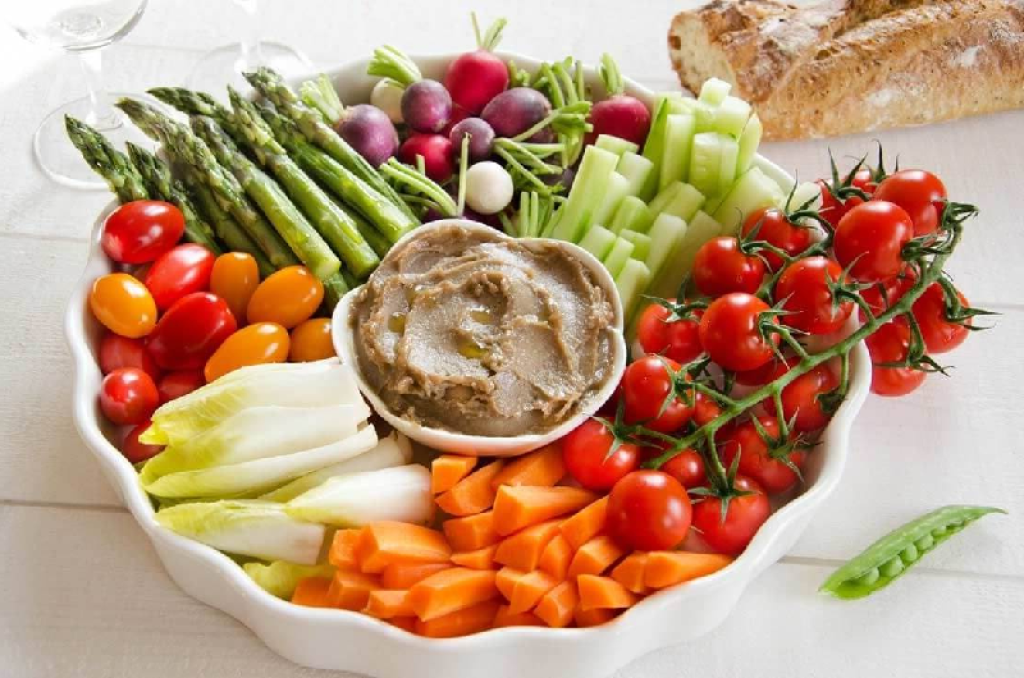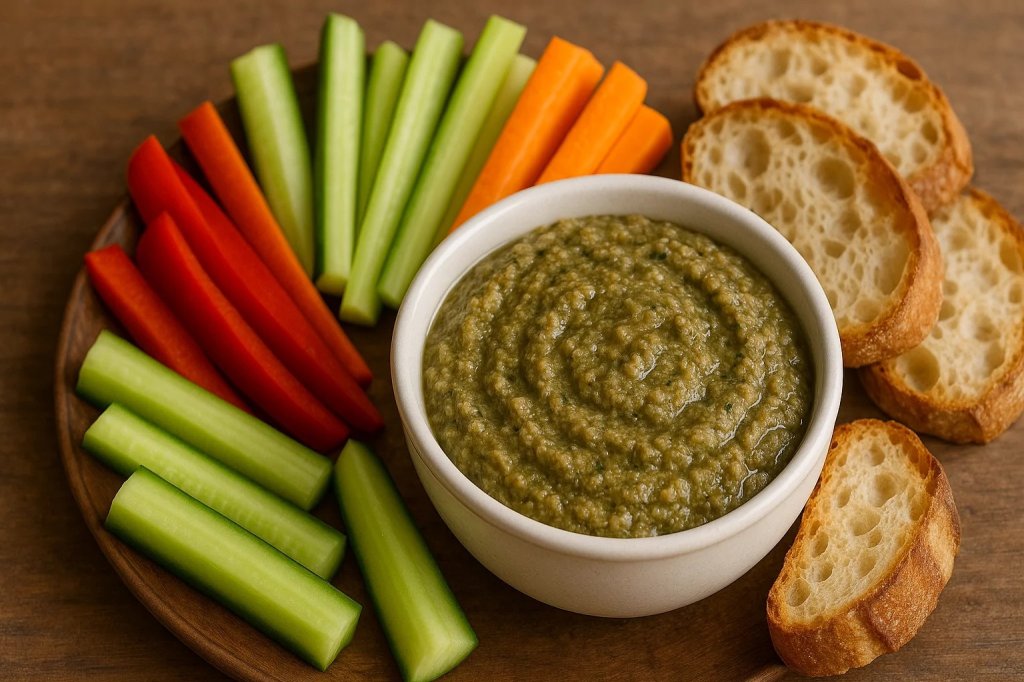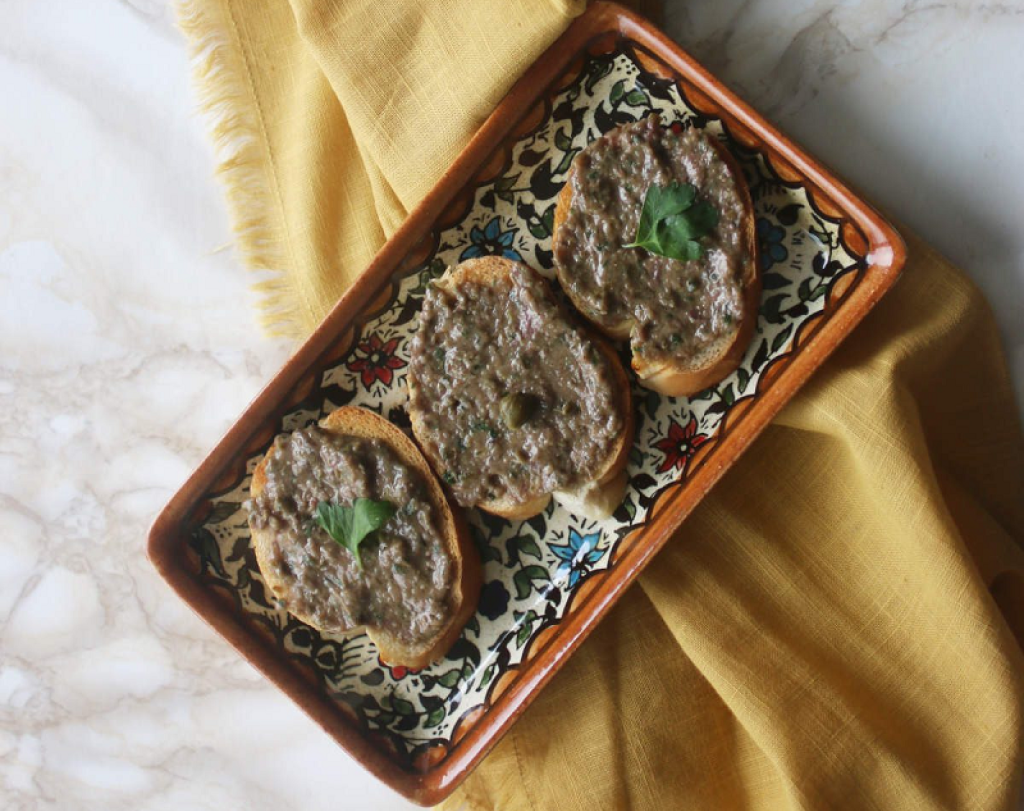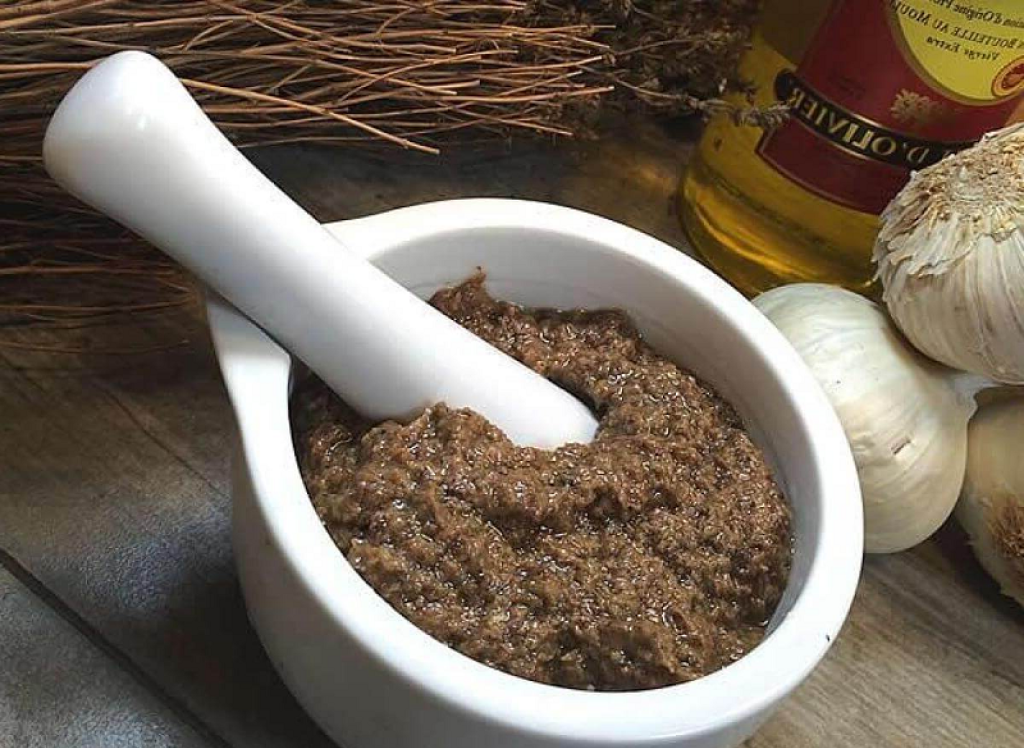We continue to introduce you to the culinary traditions of Provence with a little wonder: Anchoïade. This easy-to-make Provençal sauce is a real treat for the taste buds. Made with anchovies, garlic and olive oil, it's a wonderful accompaniment to vegetables, aperitifs or even pasta. Homemade for an authentic, timeless taste. A quick recipe that will transport you to Provence with every bite.

Preparing anchoïade: an easy recipe
To prepare this delicious anchoïade, follow these three simple steps:
start by peeling and degerming the garlic cloves.
Place the anchovy fillets, garlic cloves and a few capers for extra flavor in a blender. Blend to a smooth paste.
Then drizzle in the olive oil, while continuing to blend to obtain a creamy consistency. A little vinegar can be added to balance the flavors. You can also add a tablespoon of mustard for a spicy touch.
For a milder version, replace some of the garlic with fresh seasonal garlic. Anchoïade is best served with raw vegetables such as carrot or celery sticks, or cauliflower florets. It can also be served with hard-boiled eggs cut into quarters, or on slices of toast.
Explanatory video
Here's a well-made video by a French chef, detailing all the steps involved in anchoïade:
Anchovies and capers: the key ingredients in anchovy paste
Anchovies and capers are the mainstays of anchoïade, providing a unique, intense flavor. Anchovies are often used in the form of desalted fillets, while capers add a tangy, acidic touch.
To prepare anchovy paste, it's crucial to desalinate the anchovies thoroughly. Soak them in water or milk for around 30 minutes. Then drain them carefully to prevent the sauce from becoming too salty.
As for the capers, they need to be rinsed to remove any excess salt. Once the ingredients are ready, they are usually pounded together in a mortar. This traditional method releases the aromas more effectively.
Another tip is to add black or green olives to vary the flavours. This adds an extra dimension to the recipe, making it even more gourmet.

Traditional recipe for creamy anchovy sauce
For the perfect creamy anchovy sauce, start by choosing quality anchovies. Use anchovies in salt rather than oil, as they have a stronger flavor. Don't forget to desalinate them properly to avoid an overly salty sauce.
Next, prepare the other ingredients:
Garlic, peeled and degermed, for a milder flavor.
Capers, well rinsed, to add a touch of spiciness.
Extra-virginolive oil, preferably, for a creamy texture.
Wine or cidervinegar, to balance flavors.
Mash the anchovies and garlic in a mortar until smooth. Add the capers, then drizzle in the olive oil while stirring continuously. Add a dash of vinegar at the end, adjusting to taste. You can also add a few black olives for a more flavorful variation.
Aperitif anchovy paste: how to serve?
To serve anchoïade as an aperitif, think about varying the pleasures by accompanying it with different types of supports and accompaniments. Choose crunchy raw vegetables such as carrot sticks, cauliflower florets, radishes or celery stalks.
You can also opt for slices of toast or farmhouse bread. For a more Provencal touch, serve on slices of focaccia or fougasse. Don't forget cherry tomatoes and quartered hard-boiled eggs, which go perfectly with this sauce.
To surprise your guests, offer raw button mushrooms, whose firm texture and delicate taste harmonize well with the powerful flavors of the anchoïade. Use ramekins or small dishes to present the sauce, so that everyone can help themselves.

Anchoïade for 10 people: adjust the quantities
To adjust the quantities of anchoïade for 10 people, it's essential to triple the proportions of the basic Provençal recipe. Here are the quantities required:
Anchovies: Use approximately 450 grams of anchovies in salt or oil.
Garlic: Prepare 8 to 10 cloves of garlic, depending on your preference for flavor intensity.
Capers: Add 6 teaspoons of capers.
Olive oil: Use approximately 375 ml of quality olive oil.
These proportions will guarantee a tasty anchovy paste that's sure to please your guests.
Don't forget to desalinate the anchovies before use. To do this, soak them in water or milk for 30 minutes. Then drain carefully.
This method produces a well-balanced flavor, ideal for accompanying crunchy vegetables or toasted bread.
Storing homemade anchovy paste
There are several ways to store your homemade anchovy paste. The first is to place it in an airtight jar and cover with a thin layer of olive oil. This prevents oxidation and prolongs freshness.
Another option is to cover it with cling film directly on contact. This method is just as effective in preventing exposure to air. Anchoïade can be stored in the refrigerator for several days, up to a week.
Before serving, remember to stir the sauce well to blend the flavors. If you notice that the anchoïade has thickened, add a drizzle of olive oil to restore the desired consistency. These tips ensure optimal preservation and a consistently successful tasting experience.

Your questions about Anchoïade Provençale
After writing this recipe, you sent us several questions by e-mail. Here are our answers to your most frequently asked questions. Please don't hesitate to contact us if you have any further questions.
What vegetables should I serve with anchoïade?
To fully appreciate the flavors of your anchoïade, choose a variety of crunchy vegetables. Here are a few suggestions to create the ideal platter:
Carrots: cut into sticks, they add a sweetness that balances the salty taste of the anchoïade.
Cauliflower: in florets, raw or lightly blanched for a crunchy, delicious texture.
Radishes: their light spiciness blends perfectly with the creaminess of the sauce.
Celery: in stalks, it offers a pleasant freshness and crunchiness.
Peppers: red, yellow or green, cut into strips, they add a colorful, sweet touch.
Cucumbers: sliced for a refreshing taste.
Artichokes: steamed, their leaves are ideal for dipping in anchovy paste.
These vegetables bring a palette of flavors and textures that will enhance your anchoïade, for a convivial and tasty aperitif.
How to store homemade anchoïade?
To preserve homemade anchoïade, we recommend storing it in an airtight container. This prevents exposure to air and prolongs shelf life.
Cover the surface of the anchoïade with a thin layer of extra-virgin olive oil. This prevents oxidation and keeps the ingredients fresh. You can also use cling film directly in contact with the sauce.
Store the anchoïade in the refrigerator, where it will remain fresh for several days. Before serving, stir well to blend the flavors. If the sauce has thickened, add a little olive oil to restore the ideal consistency.
These precautions will ensure that you enjoy your anchovy paste in the best possible conditions.
How to melt anchovies
To melt anchovies, start by rinsing them under cold water to remove excess salt. Then drain them thoroughly. Put a frying pan over low heat and add a drizzle of olive oil.
Stir in the anchovies and let them melt slowly. Use a wooden spoon to crush them while stirring. This process usually takes a few minutes.
Once the anchovies are well dissolved, you can add other ingredients such as garlic or capers to enrich the preparation.
This technique is ideal for creating a tasty base for sauces, spreads or other Provencal dishes.
How to eat anchoïade
To enjoy anchoïade, start by preparing an assortment of fresh raw vegetables: carrots, cucumbers, celery, radishes and cherry tomatoes are perfect. Arrange them in sticks or slices for easy eating.
Anchoïade can also be served with lightly toasted slices of farmhouse bread. The bread adds a crunchy texture that contrasts nicely with the creamy texture of the anchoïade.
For an authentic touch, serve with quartered hard-boiled eggs. This combination adds richness and variety to your aperitif.
Use a serving dish or several small bowls to present the sauce. This allows everyone to serve themselves according to their tastes and create personalized flavor combinations.
Finally, don't forget a glass of chilled rosé to enhance this Provencal experience.
Which wine to drink with anchoïade?
To accompany an anchovy paste, there are several wine options to enhance its Mediterranean flavors. A dry, fruity white wine like a Chardonnay or Sauvignon Blanc is ideal for balancing the salty taste of anchovies.
If you prefer a red wine, opt for a Pinot Noir or Grenache, which add a touch of lightness while respecting the powerful aromas of anchovy paste.
Rosé lovers will be delighted with a Côtes de Provence rosé or a Les Baux de Provence rosé. These wines, typical of the region, offer a welcome freshness and go perfectly with the crudités and toasted bread that usually accompany anchoïade.
Finally, for an even more authentic experience, choose a Cassis or Bandol wine, two dry white wines from Provence that enhance the iodized flavors of anchovies.
Find all our Provencal recipes here :
not forgetting our Provençal dessert recipes :













